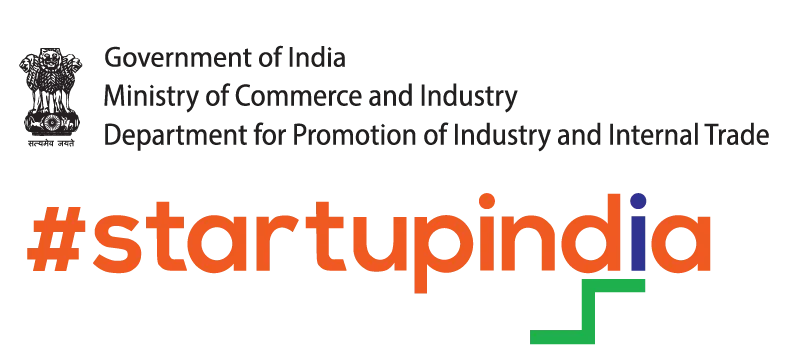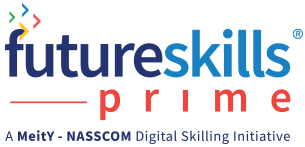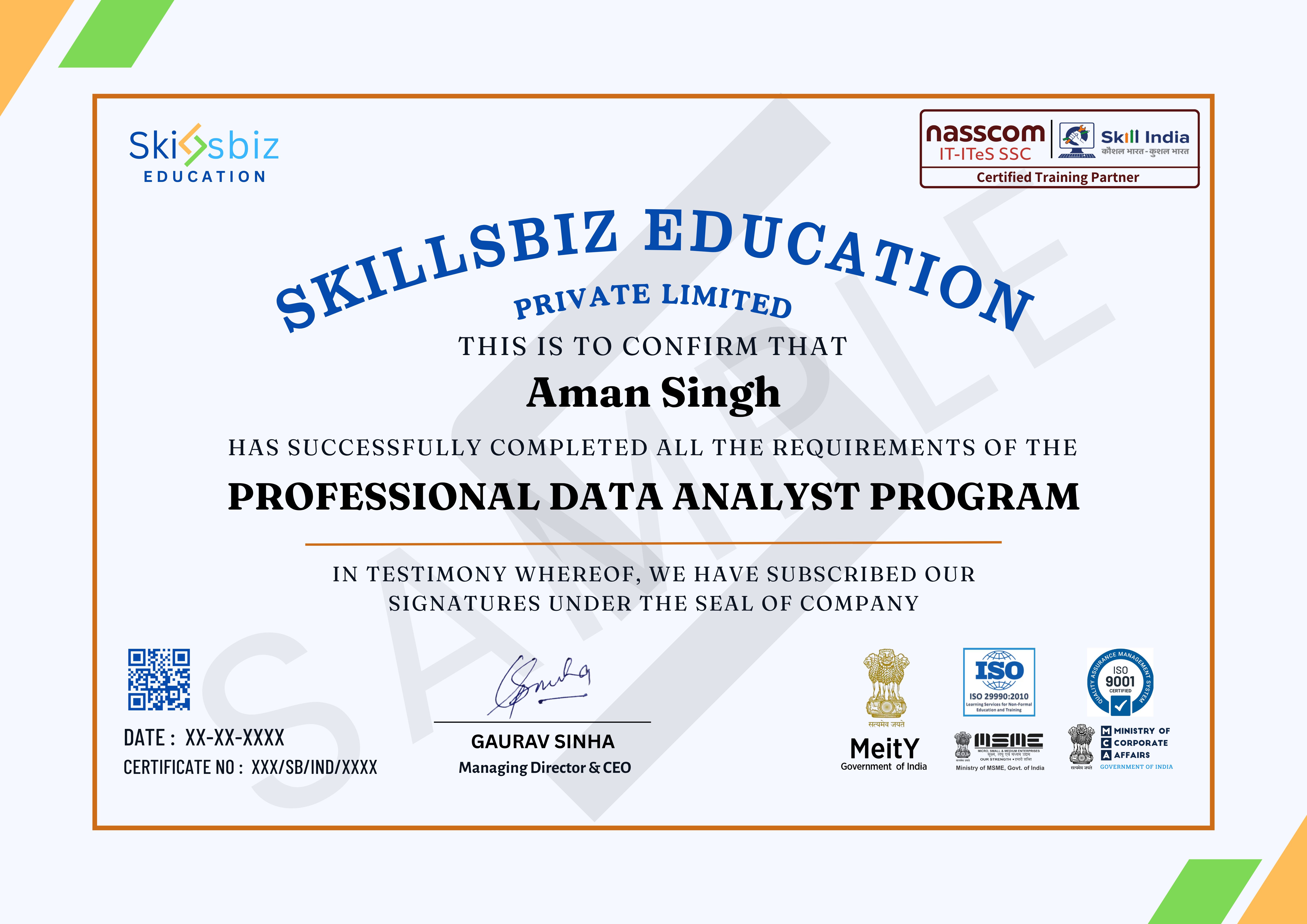Professional Data Analyst Certification Program
Master the skills needed to become a professional data analyst and unlock the power of data-driven decision making.











Experience a modern, outcome-driven curriculum
Built with industry mentors, this program blends immersive live sessions, simulation projects, and on-demand resources so you can master Mandarin Chinese with confidence.
This comprehensive course will equip you with the necessary skills and techniques to analyze data effectively. You will learn how to use various data analysis tools, understand statistical concepts, and present your findings in a clear, actionable format.
Why learners love this program
Each element is crafted to accelerate fluency, cultural context, and career readiness.
- Hands-on training with Python, SQL, and Excel for data cleaning, transformation, and analysis
- Applied statistics and predictive modeling to uncover insights and support decisions
- Data visualization and storytelling to present findings clearly to stakeholders
Unlock the capabilities that matter in real-world communication
Every module stacks practical language skills with cultural fluency, so you can speak confidently in professional, academic, and social settings.
Certificate You'll Receive
Earn an industry-recognized certificate upon successful completion of this course.

Book a discovery call with our program specialists
Get tailored advice on learning paths, certification journeys, and industry opportunities before you enroll.
In a focused 20-minute consultation we map your current proficiency, clarify where you want to get to, and suggest the quickest route to fluency with milestones we can help you hit.
- Understand the skill gaps holding you back and the modules that can close them in the next cohort.
- Get a personalised cohort recommendation based on availability, trainer profile, and your weekly bandwidth.
- Discover global project work and certification add-ons that enhance Mandarin credentials on your CV.
Reserve your slot
Share your details and we will connect within 24 hours to set up a personalised walkthrough.
Structured modules that build fluency session after session
Explore the complete roadmap—from foundational vocabulary to advanced professional expressions—crafted with practical immersion in mind.
What is Data Analysis?
- https://docs.google.com/presentation/d/e/2PACX-1vT1I9wS-QW_0OC2AQ9E1VUJvllEKZBT6JRYUD9fAgDXvUK9rvdgnUCr-apDhsTWFQ/pubembed
Types of Data
- https://docs.google.com/presentation/d/e/2PACX-1vTVyt7EshA7APonjkPqtMkRe1qsE92Bo6OgqjQpcKWMcswZg-AohY8btqE-qGgFLg/pubembed
Data Collection Methods
- https://docs.google.com/presentation/d/e/2PACX-1vTepKyUNGMSoYA1LxwMORhdbiZlEKBjj61Q8Mwveefy7wSzUbHODZ20_J4YnWhGIw/pubembed
Overview of Analysis Tools
- https://docs.google.com/presentation/d/e/2PACX-1vQgNebI4oWe_AQhUp3JGlFrsHGS29uhr0Nh1YbNILpKgZItsBgsIAQPhXvxH-nFSA/pubembed
Data Quality and Cleaning Basics
- https://docs.google.com/presentation/d/e/2PACX-1vT8l6nfwoUJiJWeE-T2u2oqlzs9iHHs2ZhB4TuZUEHtYNnxvH5aKfoTEtgwmniF7Q/pubembed
Descriptive Statistics Fundamentals
- https://docs.google.com/presentation/d/e/2PACX-1vQy41z0KuczKJVc1vXbM-dzJVqHEpIiCzi_CucFimABJ7AexKDOTLpVQjCu0vDjRQ/pubembed
Measures of Dispersion
- https://docs.google.com/presentation/d/e/2PACX-1vS6EOIAnPb-IKfMuzuz05-TuOllwfz9NzguxqLnbSgIfDJVHL3JZPoQ74HG7pfX1w/pubembed
Distributions and Normality
- https://docs.google.com/presentation/d/e/2PACX-1vR3X7eGcaIj474-ljfb2RkhJgmYD1tezuzf7rS9eFQ4FEEU-6V_df0ErPexXYyo2Q/pubembed
Sampling and Estimation
- https://docs.google.com/presentation/d/e/2PACX-1vT1aBK7wSrKislqWAfcK4MmTxclEFXwH2f6Wy25sovN2uG9KmsjbOa35UM7ib8SGg/pubembed
Hypothesis Testing Basics
- https://docs.google.com/presentation/d/e/2PACX-1vRTNYTiX3-MKqw4MpytoGjcPIog8wPkT5B0ASJ0L7sY1Ujj__s_Eoj61m4oHQYk9A/pubembed
Correlation and Causation
- https://docs.google.com/presentation/d/e/2PACX-1vQXGuwStKvx3S18kvDkrtFIJTQC80XEVbQTwdlzeLywk8xZU50XW-xBLUT8VbUv7Q/pubembed
Principles of Effective Visualization
- https://docs.google.com/presentation/d/e/2PACX-1vSVU0D4WKChpWQ9L_uC69tX6xxlcXzhCrQiHe6xCt1uVP4SBVoI0ePviZWSotEhNQ/pubembed
Chart Types and Uses
- https://docs.google.com/presentation/d/e/2PACX-1vTzQxjeXi6Go1yxo33zscMo8WSZRodzwaRoQ5vieeg-2ln5y7OWIjtzD5thj-_zPA/pubembed
Visualization Tools and Libraries
- https://docs.google.com/presentation/d/e/2PACX-1vQZt-jzP3RQ2SHqIlDkgBe1AWrOyR5SVkECDnGKRQheT4APtnkMWqflAqXgmpxSdQ/pubembed
Dashboard Design and Storytelling
- https://docs.google.com/presentation/d/e/2PACX-1vSk_F9wBpYDMbZmGag1UZeBsj3SqpwT7GY9FKAYHMgAQZ0wIArmyVu0PVBI2600bg/pubembed
Accessibility and Ethics in Visualization
- https://docs.google.com/presentation/d/e/2PACX-1vT6UCZI7alq-1nhb_Fi7LYZIWPKIzqpt6Rys3llX4_uCJIBhfMxKUVQZJ00r1GrZg/pubembed
Python Basics for Data Work
- https://docs.google.com/presentation/d/e/2PACX-1vTV9JMW7ghNnkhVbkdaiW21gsiD9ofmGKZFEmsuQAz_t8xJaeL-eiSnwSWbMkPLew/pubembed
NumPy for Numerical Computing
- https://docs.google.com/presentation/d/e/2PACX-1vT6CbzobImEh1XX_qYlusU7vNdDwquBJ15geYhC-1zk9Om85-WzfQrFw7dIP98vAw/pubembed
Pandas for DataFrames
- https://docs.google.com/presentation/d/e/2PACX-1vS41SUzT8QdpG_tpjKpJurT_vOxk1rkFRCEWN_uEYSJXg9dkKbAEM3tZtzBVJw6ZQ/pubembed
Data Cleaning with Python
- https://docs.google.com/presentation/d/e/2PACX-1vStY41yXKB-bMoHDF2Kup8fA7Z0VBSX5mZOqP72Jl0Xznsi85FCjPTJXgE5LF0ZOw/pubembed
Exploratory Data Analysis in Python
- https://docs.google.com/presentation/d/e/2PACX-1vSplzyWfRZ1HxKqdORCzuyVU5rhwGTKjGKcDfCMYDzOVdmJIg616OvM8amjzl8eEQ/pubembed
Scripting and Reproducibility
- https://docs.google.com/presentation/d/e/2PACX-1vR-53O4YYclGuFlaK_l1a6OFTmgAXizsiBbvso7LVRmLYFV8Srs2YcKdz3JMIUkyw/pubembed
Excel Fundamentals for Analysis
- https://docs.google.com/presentation/d/e/2PACX-1vRpU6O6Lnuct3T0EDN3_25ONZs2CQ4oHlasfRusf7c_Qtpsz8Y0fZ__KDYOVw703Q/pubembed
Data Cleaning and Transformation in Excel
- https://docs.google.com/presentation/d/e/2PACX-1vS-gDR0GiesAQrnBH4smtdt86m800UYOrBv4dkzvtipuud0OP7s_lJeQsuDfCBvdQ/pubembed
Advanced Formulas and Functions
- https://docs.google.com/presentation/d/e/2PACX-1vRR0lhWbi3qxDaYv7DZVAlTH_GKvvKjhiNPkzQxPSzbQ-D7m3-DwNfi9mQ8X70BKw/pubembed
Pivot Tables and Summarization
- https://docs.google.com/presentation/d/e/2PACX-1vS35p7xDUsUnkkhfJepdmrcqX6VmkSSk0n-j8PRwxADF1-KbpcBIlPlg8ZxB9eilw/pubembed
Excel Visualization and Reporting
- https://docs.google.com/presentation/d/e/2PACX-1vQSzCPtp6g1E1ye6XdIphkAiC0X75iVkf5B1gMbjuEE5lxZzR7oYRP_Qr4MD_7VUQ/pubembed
Automation with Macros Basics
- https://docs.google.com/presentation/d/e/2PACX-1vQXY9zBRsrDgnYD_ik82149sebudJg7pMlJKxar6OH0DH2cYasRtfAnQUe_X1rwXg/pubembed
Relational Database Concepts
- https://docs.google.com/presentation/d/e/2PACX-1vS-GQARm8lmFgDgPdGgB-SeFMIaHBwOheTHQ2638ij337sQ4TdHZBc4_VzArC4XmA/pubembed
Basic SQL Queries
- https://docs.google.com/presentation/d/e/2PACX-1vRiLun4k6YkHPHZ6oa4aT9KQpHrQOJZAQHPWDpjkOpIi9Jg3xcDj5z94glzl-p-_w/pubembed
Joins and Subqueries
- https://docs.google.com/presentation/d/e/2PACX-1vTsERqxodtPJZQSeINBeHSijxYgNtZHNqRzqYcVmMFqiMJr8uNBK7DY2zlsuU3iJg/pubembed
Aggregation and Grouping
- https://docs.google.com/presentation/d/e/2PACX-1vTVgXPl78RlCnUMippihis3kYVmRsbMxeC1u5PM1ZUV22mHJMD5tsu2uPJrupZSXw/pubembed
Window Functions and Advanced SQL
- https://docs.google.com/presentation/d/e/2PACX-1vR82CBjx2dwewZQbB6k6lbrDbFz5MgqgZB2KXeHvhs-M3LnmX_6db_z-ZIqfBd72w/pubembed
Supervised vs Unsupervised Learning
- https://docs.google.com/presentation/d/e/2PACX-1vStqH3Z1CBjpYbA8T5NVt2LGQJbZdssivUSSpk6hQeXRp7nZE52BeanGxx36R1f-g/pubembed
Regression Techniques
- https://docs.google.com/presentation/d/e/2PACX-1vQ88fU9s4dBIQJNodo1vCTtyZ2gvgB2VrZ73erb0abKcBlpBhBe4TU2YKdaJEdNEQ/pubembed
Classification Methods
- https://docs.google.com/presentation/d/e/2PACX-1vQkhER4joc4CFBs4oEZmShxu-FuB0n8NF6ST5uqVqAjIH3SwWI_L5NrRrADmEt3rg/pubembed
Model Evaluation and Validation
- https://docs.google.com/presentation/d/e/2PACX-1vTKMebcVzmRu2-twi4q2X8Qccvji4698oF_1hUNaVttTW_X7ilSaS4eT9RG8OwjRg/pubembed
Feature Engineering and Selection
- https://docs.google.com/presentation/d/e/2PACX-1vSOUmCq3oQfBCx5sfIagUDjGSkIuSFHaIPFO6Vu8OFuPRNEQpCVqDbBop9mAUzBVA/pubembed
Introduction to Model Deployment
- https://docs.google.com/presentation/d/e/2PACX-1vTOgVhmX3exHqlbvgAFZlVI8-kjVhrCsWRISpZ-71QJ7xv4gWXDSIogsvY1ZU2Dsg/pubembed
Ethics and Responsible ML
- https://docs.google.com/presentation/d/e/2PACX-1vSpXBfQ6dIQXqoQRXzqyvD9zOzv0ZXHsAl18oybj1BINaQvq1KJt9Kl5gu9_99Fpw/pubembed
Project Scoping and Data Acquisition
- https://docs.google.com/presentation/d/e/2PACX-1vTEQ7FqA7oEIfYeAphA_eZbcxg0iy9bvUAtEKqMwFClZGCLmkv40KrartPGda_lXg/pubembed
Data Preparation and Exploration
- https://docs.google.com/presentation/d/e/2PACX-1vQubs7iQ1KV50YCddEZSmgtnGRxSHt9qVsPQRDFiVxbY4AKlk-5ALaKsmgXkZT4iQ/pubembed
Analysis and Modeling
- https://docs.google.com/presentation/d/e/2PACX-1vSoJnYnc8_Kx9Co30w5aMStCOWvSzDTPu2pfkLbEcgHxzmTsk5kj5XeMwXyUtPJCA/pubembed
Visualization and Reporting
- https://docs.google.com/presentation/d/e/2PACX-1vShaLQ_3ArejsMPaPRQzx9ttS9fNfrqCLFhfiROKpGLyhhrSpuT0XpFPJNKI_5WwA/pubembed
Final Presentation and Reflection
- https://docs.google.com/presentation/d/e/2PACX-1vR2B88S8XjNsqVJ9qMtsysPfFm5Y1amASDlR_xAK9-fJD_x_I0mkhRqcqUxTrGizw/pubembed
Pick a schedule that fits your routine
We run multiple live cohorts so you can line up a batch with your goals, weekly bandwidth, and preferred mode of learning.
Stories from professionals who accelerated with SkillsBiz
Hear how learners leveraged mentor feedback, immersive projects, and certification support to reach their Mandarin goals.
Your questions, answered in one place
Everything you need to know before you commit—from certification timelines to support during the program.
Global recognitions that power your profile
We are trusted by leading accreditation bodies, ensuring your certificate is respected by employers worldwide.










Ready to fast-track your Professional Data Analyst Certification Program mastery?
Join a live cohort, collaborate with peers, and unlock premium resources designed for global careers.


















